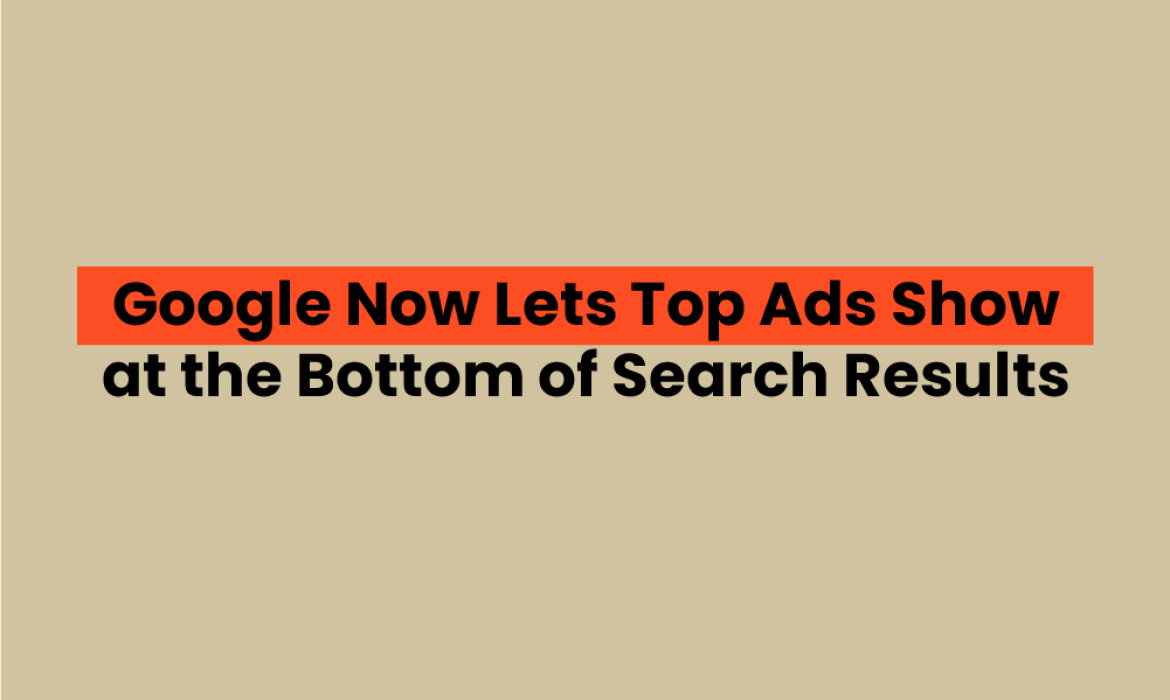A Major Update to Google Ads Placement Could Double Your Visibility — If You Focus on Quality
Google has quietly rolled out a significant update to its search ad placement rules: top-performing ads, which were previously eligible only for the top of the search results page, can now also appear at the bottom.
This seemingly small change opens the door to more exposure, smarter bidding strategies, and an expanded presence for advertisers — provided they meet Google’s strict quality standards.
Let’s break down what’s changed, why it matters, and how you can make the most of it.
📢 What’s Changing in Google Search Ad Placements?
Previously, Google allowed only one ad from a single advertiser to show per search results page, and it could appear either at the top or bottom — not both.
✅ Old Rule: One ad, one position (top or bottom)
✅ New Rule: Top-performing ads can show at both the top and bottom of the same page
This update is possible because Google runs separate auctions for the top and bottom positions.
According to Google, early tests showed:
- 10% more relevant ads shown to users
- 14% increase in conversions from bottom-of-page placements
That means users aren’t just seeing more ads — they’re interacting with them more.
🚀 Why This Matters for Advertisers
This change offers double the opportunity for strong ads to appear in front of potential customers. But it’s not about stuffing the page with more ads — Google is clear that quality and relevance are still the gatekeepers.
To benefit from this expanded eligibility, advertisers must:
✅ Write compelling, relevant ad copy
✅ Deliver strong landing page experiences
✅ Optimize for user intent and satisfaction
If your ads meet Google’s quality standards, you could now occupy both premium real estate spots on a search page — increasing your chances of winning attention and conversions.
💡 How Does This Align with Google’s Unfair Advantage Policy?
Some advertisers raised concerns about whether this change conflicts with Google’s Unfair Advantage policy, which prohibits “double serving” (showing multiple ads from different accounts or domains that point to the same business).
Google clarified:
This change is allowed because top and bottom placements are run in separate auctions.
In simple terms, your ads aren’t competing against each other in the same auction. Instead, they’re independently eligible to win placement in two distinct areas of the page.
So as long as your ads meet the relevance and quality thresholds, you’re not violating any policies by appearing in both spots.
🔍 What Should Advertisers Do Now?
This change doesn’t require any opt-in — if your ads are eligible, they’ll automatically start showing in both places. But smart advertisers won’t just sit back.
Here’s how to stay proactive:
✅ Track Impression Share by Position
Use Google Ads segmentation to see where your ads are appearing (top vs. bottom) and how each is performing.
✅ Monitor CTR and Conversion Rates
Identify whether top or bottom placements deliver better results, then adjust bids, copy, or assets to capitalize on what works.
✅ Revisit Quality Score Drivers
Focus on improving expected CTR, ad relevance, and landing page experience to boost overall eligibility and performance.
✅ Leverage Automation, But Stay Hands-On
Smart Bidding can help optimize for new placement opportunities, but human oversight ensures alignment with your business goals.
✅ Prioritize Business Outcomes
Clicks from the bottom of the page may be cheaper, but make sure they’re driving meaningful results like leads or sales — not just vanity metrics.
📈 How This Shapes the Future of Search Advertising
Google’s decision to allow top-performing ads in both premium and secondary positions signals a continued focus on:
- Enhancing user experience
- Rewarding quality over quantity
- Optimizing available inventory without cluttering the page
For performance marketers, it’s a reminder that strong creative, clear calls to action, and excellent landing page experiences are the key to standing out — and now, to showing up twice on the same page.
✅ Key Takeaways for Advertisers
| What’s New | What It Means |
| Top ads can appear at page bottom | More chances to capture user attention and increase conversions |
| Separate auctions for top/bottom | You’re not “beating” your own ads — you’re winning in two different spaces |
| Relevance still matters most | Low-quality ads won’t benefit; only the best content earns dual placement |
| Opportunity for better strategy | Analyze performance by position to refine bidding and creative tactics |
🛠 Practical Steps Moving Forward
- Audit Your Ads — Ensure you’re delivering the most relevant, engaging content possible.
- Check Segmentation Reports — Understand where your ads appear and how each placement performs.
- Test and Optimize — Use A/B testing to refine your strategies for both top and bottom positions.
- Align Metrics to Goals — Don’t chase cheap clicks; focus on true business impact.
🌟 Final Thoughts
Google’s latest update is more than just a small tweak — it’s a signal about the future of paid search. Quality, user relevance, and strategic positioning are more important than ever.
Advertisers who stay informed, adjust their strategies, and focus on delivering meaningful experiences will be best positioned to take advantage of this expanded visibility and drive stronger results.



